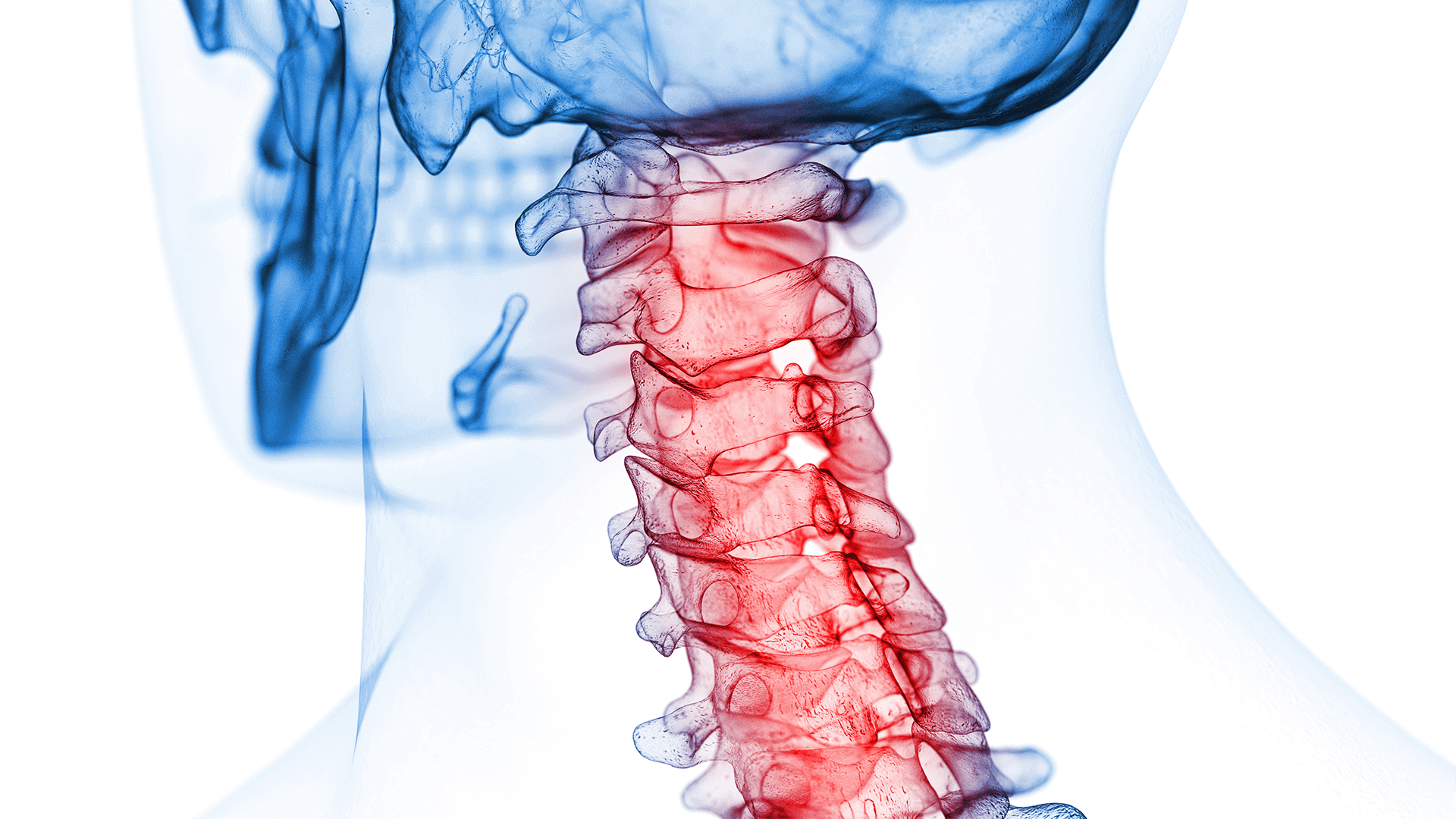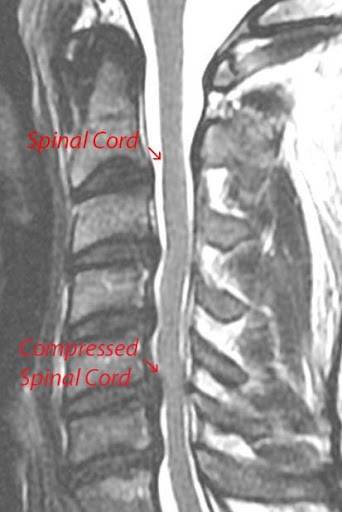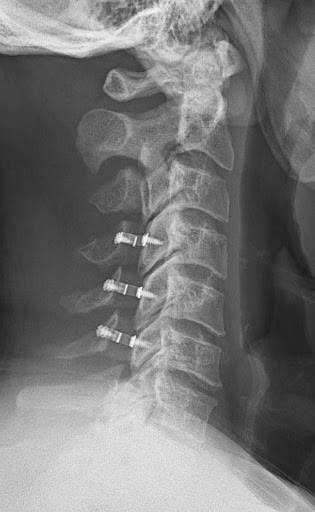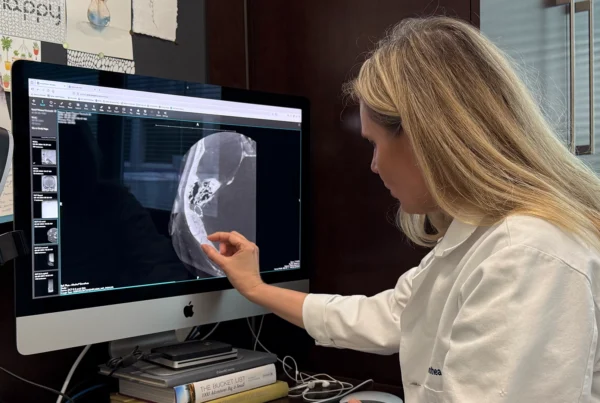A cervical laminoplasty or laminectomy may be the procedure you need to decrease spinal cord compression, stop the progression of these issues, and potentially restore lost function.
Read on to learn more about this type of spine surgery and decide if this is something you should consider.
What Is the Difference Between Cervical Laminoplasty and Cervical Laminectomy?
The lamina is part of the spinal vertebrae, the bones of the spinal column, that forms the bony roof of the spinal canal.
This is the channel that contains your spinal cord and nerves. As we age, the spine will degenerate leading to a herniated disc or bone spurs that cause spinal stenosis, narrowing of the spinal canal. This leads to pressure on the spinal cord and spinal nerve roots causing pain, numbness, or weakness.
Spine surgery may be necessary if a patient has neurological deficits that are severe or increasing with time.
A cervical laminectomy involves removing the lamina. This widens the spinal canal, and relieves the pressure on the spinal cord.
However, removing the lamina may have a negative effect on the strength and stability of the spine. This can lead to a deformity or increasing pain.
As opposed to surgical procedures that involve a spinal fusion with placement of bone graft and elimination of movement, such as an ACDF (anterior cervical discectomy and fusion), a laminoplasty maintains a patient’s range of motion.
Even though metal plates and screws are inserted to hold the bone open, these implants do not bridge across separate bones, but connect the same bone back to itself, just in a new position.
Cervical Laminoplasty Patients
A cervical laminoplasty is indicated to treat patients with:
Conditions that may lead to compression of the spinal cord include:
- Cervical spondylosis
- Cervical stenosis
- Ossification of the posterior longitudinal ligament
Make sure to speak with an experienced spine surgeon to see if a laminoplasty is among the surgical treatments for you.
How to Prepare for Laminoplasty
Be sure to have a pre-op appointment with your surgeon to discuss the procedure. You should ask questions. Make sure that you feel comfortable with the treatment plan.
The surgeon or their staff may also give you instructions on what to do before your surgery, such as stopping certain medications to reduce a bleeding risk.
Follow the steps as closely as you can so that you can go into surgery prepared.
How Is A Cervical Laminoplasty Performed?
These procedures are performed under general anesthesia.
- Once you are sleeping, you will be positioned on your stomach to provide access to the back of your neck. To hold your head in position, a clamp is applied to your skull to make sure your neck doesn’t move during surgery.
- The surgeon will make an incision in the back of the neck and separate the muscles to expose the spine. Once the spine is exposed, a drill is used to create a hinge on one side of the spinal lamina and an opening on the other side.
- The lamina bone is then rotated to an open position, like opening a door. The bone is held in the open position with the implantation of small metal plates and screws. This relieves the pressure on the spinal cord.
- A drain may be placed to help prevent the formation of a blood clot and the muscles and incision are then closed.
- Finally, the wound is dressed, you are woken from anesthesia, and you are taken to the recovery area. There, you will begin the recovery process. Depending on the severity of disease, a laminoplasty typically takes several hours.
After the Surgery
You can expect to stay in the hospital for a day or two after the surgery.
Once you can, usually the same day or the day after surgery, you should get out of bed to move around.
You may have an evaluation by physical therapy to assist in getting out of bed and walking when you first start moving.
You will receive pain medication, usually taken by mouth.
Since a laminoplasty is intended to maintain your motion, there is generally no need to wear a collar after surgery.
After you are discharged home, you will see your surgeon during post-op appointments to monitor your condition.
Pain and discomfort can take a while to go away, so take it slow and go easy on yourself during the recovery period. Remember, this material is for educational purposes only. Always follow the specific instructions provided by your treating surgeon.
Laminoplasty Long-Term Effects
In general, patients respond very well following a laminoplasty, but you have to be aware of potential complications, including:
- Wound infection
- Post-operative hematoma
- Dissociated motor loss or C5 nerve palsy – a form of nerve irritation that can occur despite a technically successful surgery leading to deltoid and biceps weakness. This usually improves with physical therapy.
Relieve Spinal Stenosis: Laminectomy vs. Laminoplasty
Spinal stenosis and other conditions can make it hard to live, but you can have relief. If you suffer from symptoms from spinal stenosis, you should seek consultation with a spine specialist familiar with all the surgical options, including laminectomy vs. laminoplasty, to determine which procedure is right for you.
While a laminectomy may be right for some patients, it can be too extreme for others.
Fortunately, a laminoplasty is a suitable alternative. Do you need spine surgery? Learn about our treatment options and how we can help.

About Dr. Michael G. Kaiser
Dr. Michael G. Kaiser is a nationally recognized neurosurgeon in North Jersey and is a proud member of Neurosurgeons of New Jersey, practicing out of their Ridgewood office conveniently located on East Ridgewood Avenue. Dr. Kaiser specializes in complex and minimally invasive spine surgeries.
Please call today to schedule a consultation with me.
(551) 284-3265
Request a consultation with Dr. Kaiser








